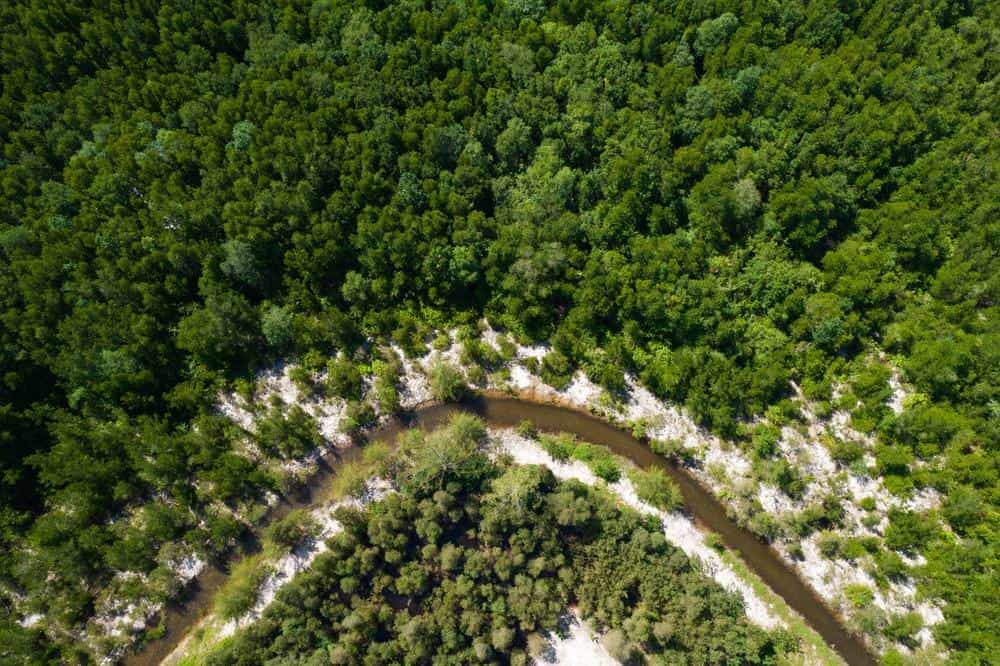
The Spotted Skunk, an elusive and fascinating creature, is native to North America. Its distinctive black and white markings make it easily recognizable. However, where exactly does this intriguing animal live? In this comprehensive guide, we’ll explore the geographical distribution, preferred habitats, and threats to the Spotted Skunk population.
Spotted Skunks, native to North America, are found in various regions depending on the species. The Western Spotted Skunk inhabits areas west of the Continental Divide, the Eastern Spotted Skunk is found in southeastern Canada, the United States, and northeastern Mexico, the Pygmy Spotted Skunk is endemic to the Mexican Pacific coast, and the Southern Spotted Skunk is found in Mexico and Central America. They prefer habitats like savannas, rocky areas, prairies, forest edges, riparian corridors, and brushy fence lines.
Geographical Distribution
There are four extant species of spotted skunks: the Western Spotted Skunk (Spilogale gracilis), the Eastern Spotted Skunk (Spilogale putorius), the Southern Spotted Skunk (S. angustifrons), and the Pygmy Spotted Skunk (S. pygmaea).
The Western Spotted Skunk is found west of the Continental Divide from southern British Columbia to Central America, including parts of Montana, North Dakota, Wyoming, Colorado, and western Texas. In Washington, they inhabit the western Cascade Mountain foothills, the coast, and the Blue Mountains in southeastern Washington.
The Eastern Spotted Skunk is found in southeastern Manitoba and northwestern Ontario in Canada, throughout much of the United States, and northeastern Mexico. They were once common in the Great Plains, Appalachians, and Southeastern regions.
The Pygmy Spotted Skunk is endemic to the Mexican Pacific coast and is currently threatened, while the Southern Spotted Skunk is found in Mexico and Central America.
Preferred Habitats
Spotted Skunks are adaptable creatures that can thrive in a variety of habitats. Some of their preferred habitats include:
- Savanna habitats: These areas offer a combination of trees and grasslands, providing both cover and foraging opportunities.
- Rocky areas: Spotted Skunks often use rocky areas with coarse soils for den sites.
- Tall-grass prairies and wooded areas: These habitats offer cover and abundant food sources.
- Forest edges and upland prairie grasslands: They particularly favor locations with rock outcrops and shrub clumps.
- Riparian corridors: In western regions, they rely heavily on riparian corridors with woody shrubs and woodland edges.
- Brushy fence lines and other corridors: These provide connections between larger tracts of habitat.
Threats to the Spotted Skunk Population
Several factors pose threats to the Spotted Skunk population. They include:
- Habitat loss and fragmentation: Modern farming practices often lead to the elimination of the brushy cover that Spotted Skunks require.
- Climate change: Changes in climate can alter their habitats and affect their food sources.
- Pesticides and poisoning: Pesticides can diminish the environments in which Spotted Skunks can thrive.
- Predation: Spotted Skunks are preyed upon by various animals, including foxes, coyotes, dogs, eagles, owls, cats, and bobcats.
- Human persecution: Spotted Skunks are often seen as nuisance wildlife and may be removed or killed by humans.
Conservation Efforts
To counter these threats, various conservation efforts have been put in place. For instance, the Eastern Spotted Skunk Cooperative Study Group has authored a conservation plan addressing habitat management concerns. In Alabama, the Eastern Spotted Skunk Project aims to obtain habitat use and survivorship data to assist in more effectively managing this state-protected species.
Conclusion
Spotted Skunks, with their distinctive markings and intriguing habits, are a fascinating part of North America’s wildlife. However, their habitats are under threat from various factors, including habitat loss, climate change, and human activities. Conservation efforts are crucial to ensure the survival of this unique creature.
Frequently Asked Questions
What do Spotted Skunks eat?
Spotted Skunks are omnivorous and have a varied diet. They eat insects, small mammals, birds, reptiles, fruits, nuts, and plant matter. They are also known to eat eggs and poultry, which sometimes leads to conflicts with humans.
How long do Spotted Skunks live?
In the wild, Spotted Skunks typically live between 2 to 4 years. However, in captivity, they can live up to 10 years.
Are Spotted Skunks nocturnal?
Yes, Spotted Skunks are primarily nocturnal. They are most active during the night, when they forage for food and engage in other activities.
Do Spotted Skunks hibernate?
Spotted Skunks do not hibernate, but they often become less active during the winter months. This period of reduced activity is called torpor.
Can Spotted Skunks spray like other skunks?
Yes, Spotted Skunks can spray a strong-smelling liquid from their anal glands as a defense mechanism. However, they usually give warning signs before spraying, such as stomping their feet and doing a handstand.









